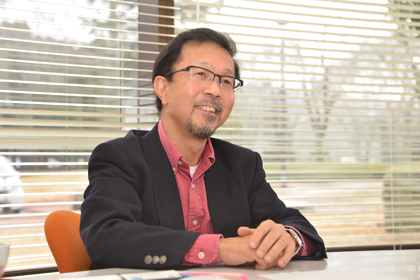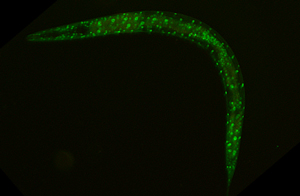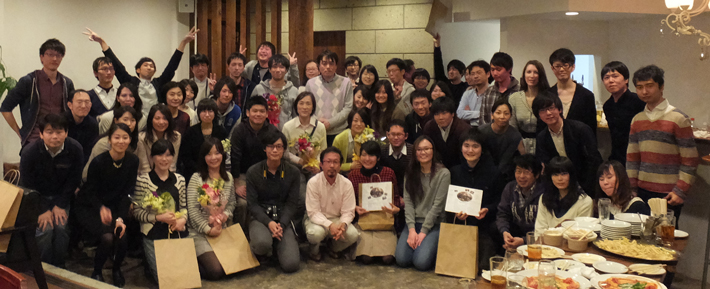TSUKUBA FRONTIER
#09 Nutrition, Birth, and Lifespan: Cracking the Genetic Code of Ordinary Life
Everyone knows the importance of eating a balanced diet. However, we do not know enough about the science of how nutrients function. The same goes for mechanisms of normal pregnancy and birth, and factors that determine lifespan. These phenomena we consider to be so ordinary are evidence of biological activity operating ceaselessly under fine-tuned regulation. Prof. Fukamizu is working to uncover the genetic mechanisms that make these ordinary things ordinary.
Professor FUKAMIZU Akiyoshi, Life Science Center of Tsukuba Advanced Research Alliance (TARA)

■ A shocking discovery of mice with pregnancy-induced hypertension
Hypertension is considered to be a lifestyle disease that appears as a chronic symptom with age, but toxemia has been known to frequently develop in young, healthy pregnant women since the time of the ancient Greeks. This is now called pregnancy-induced hypertension syndrome. It was long believed that issues during pregnancy and childbirth are inevitable, but pregnancy risks are a big problem in countries without adequate medical technology or sanitation infrastructure, as well as countries with low birth rates.
When human genes are injected into fertilized mouse eggs, mice with those human genes are born. Like humans, these mice also develop hypertension as they age. Prof. Fukamizu came up with the idea of using these mice to show that hypertension is caused by genes. In the process of that research, he by chance discovered that certain mice had developed hypertension during pregnancy. Most mammals do not develop increased blood pressure during pregnancy naturally. This indicates that the symptoms appeared because the mice had human genes.
This discovery of mice with pregnancy-induced hypertension was reported in an article published in 1996, and was a major shock to researchers around the world. Later research revealed that pregnancy-induced hypertension develops through a different mechanism than hypertension associated with aging, and that exchange of substances between the mother and unborn child holds the key to the condition. Hope is increasing that these discoveries will contribute to development of new medications for pregnant women and children and expansion of care to ensure safe childbirth.
■ The close relationship between nutrients and genes

For some diseases, vitamins and other nutrients work better than medicine. This is not surprising considering that nutrients are closely tied to maintenance of health. Metabolism varies greatly depending on factors such as age and pregnancy. Prof. Fukamizu is studying the relationship between nutrient metabolism and genes with regard to topics such as nutrient functions, changes in nutrients that occur in the body, and proper dietary balance.
He is particularly interested in an essential amino acid called methionine. In all animals, methionine is the terminal, or starting material, for protein synthesis. Methionine deficiency causes abnormal gene expression, which means that just one amino acid changes the function of the gene.
It was once believed that nutrition-related research on food and health was nearly complete, but re-examination of this area at the genetic level has revealed previously unknown aspects of nutrients. As research progresses, our ideas about dietary education may change.
■ Exploring metabolism and lifespan in nematodes
Mice are probably the first thing that comes to mind when you think about model animals for genetic research. They are mammals like humans, have a similar body structure, and have a lifespan of about 2 years, which makes them convenient for most research projects. However, they live too long for research on topics such as metabolism and lifespan.
That is where nematodes come in. Nematodes are classified under the phylum Nematoda, which are far removed from humans. They are tiny animals with a body length of about 1 millimeter. However, their genetic structure and metabolic mechanisms are surprisingly similar to humans. They have a short lifespan of a few dozen days, and have mutated forms of all their genes.

The average lifespan for Japanese men and women is now over 80 years. Is there such thing as an upper limit on lifespan for living things? It is now known that the lifespan of a nematode can be increased by two to three times through a mutation in a particular gene, which humans also possess. Following the path of genetic changes associated with nutrient metabolism and aging ultimately leads back to the function of amino acids, specifically methionine. Prof. Fukamizu is studying methionine as a clue that may help uncover factors that determine the lifespan of living things.
■ A productive research cycle driven by chance encounters
Ten years after his discovery of mice with pregnancy-induced hypertension, Prof. Fukamizu felt like his research progress had hit a wall. It was at that time he met two influential people. The first was an obstetrician-gynecologist who happened to be sitting next to him on a flight to the United States. Prof. Fukamizu was greatly encouraged to hear that this doctor had used his article about the mice with pregnancy-induced hypertension in class. At that point, he realized he was the only one who could continue the research, and that people were waiting for his results.
The second person was a nematode expert he met at a symposium. The nematode expert suggested that Prof. Fukamizu use nematodes in his research, and so, together with his students, Prof. Fukamizu attended an overnight stay to learn how to work with nematodes. This greatly expanded the scope of his research.
People are always what give him hints about how to overcome research difficulties. Those hints do not only come from leading researchers or dramatic events. The mice with pregnancy-induced hypertension, the nematodes, and his everyday encounters relating to his lab work are the driving force behind his productive research cycle.

Article by Science Communicator at the Office of Public Relation


